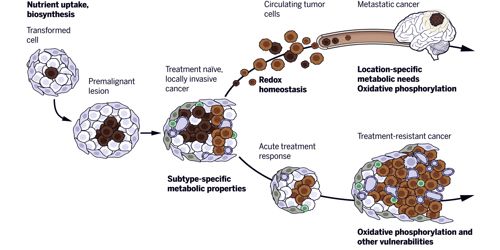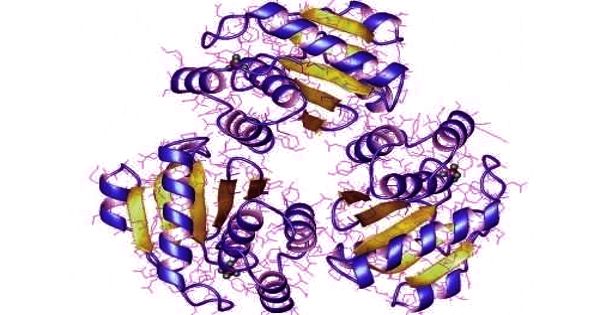Targeted therapy is a cancer treatment that uses medications to target certain genes and proteins that contribute to the development and survival of cancer cells. The abundant presence of an enzyme known as low molecular weight protein tyrosine phosphatase (LMWPTP) in tumor cells has long been used as an indication of cancer aggressiveness and metastatic potential. Important roles of cells under normal conditions are also considered to participate in both the replication process and the modulation of intracellular processes. Work continues on its role in the advancement of cancer.
In Brazil, a group of researchers at the University of Campinas In Vitro Bioassay and Signal Transduction Laboratory headed by Professor Carmen Veríssima Ferreira-Halder are researching the feasibility of inhibiting this protein phosphatase in order to establish new possibilities for cancer and other diseases to be controlled and treated.
After 14 years of studying the action of the enzyme LMWPTP in tumor cells, Brazilian researchers conclude that the molecule is associated with chemotherapy resistance and metastasis.
“We believe that inhibition of LMWPTP could contribute to the treatment of several diseases,” said Ferreira-Halder. ‘In our case, the focus is on cancer, but evidence indicates that it is also related to autoimmune disorders and diabetes, among others.’ Ferreira-Halder was the lead investigator for the thematic project ‘Low molecular weight protein tyrosine phosphatase in colorectal cancer: from bench to product production,’ funded by FAPESP and completed in June 2020.
Phosphatase stimulates the activity of intratumor proteins that enable tumors to fragment, migrate and produce metastases. “This is why we say it’s a ‘hub’ in the sense that it controls several processes that together make tumor cells resistant to treatment and able to migrate and establish metastases,” she said.

The group study paper published in Cellular and Molecular Life Sciences summarizes 14 years of studies on LMWPTP and its contribution to cancer care. “Our group was one of the first to show that this enzyme contributes to resistance to chemotherapy in leukemia cells,” said Ferreira-Halder. “The more advanced the stage of the tumor, the higher the volume of the enzyme. Based on these results, research performed in partnership with the community headed by Professor Maikel Peppelenbosch at the Erasmus University Medical Center in Rotterdam [Erasmus MC, Netherlands] has validated the importance of LMWPTP for other forms of cancer, such as breast, colorectal, and stomach cancer. This study has shown that LMWPTP not only weakens the resistance to chemotherapy treatments but is also associated with a higher potential for metastases.”
Druggable target
The analysis paper, the first author of which is Alessandra Valéria de Sousa Faria, also addresses the available compounds that inhibit LMWPTP and the features that make it impossible for drugs to be formulated against it. Ferreira-Halder suggests that it is not yet possible to talk of therapy based on inhibition of LMWPTP, although the technique can be used for other purposes.
“Our initial aim is to use this enzyme as a biomarker for the purpose of monitoring treatment and also to use it to classify patients in terms of the severity of the disease. In my view this can be done in a relatively short time,” she said. “As for treatment, a lot more work remains to be done. Professor Nunzio Bottini at the University of California San Diego [USA] has filed for a patent on a highly effective inhibitor that can be administered orally. Actually, he and his group have synthesized several inhibitors, but they have only published one. Maybe we’re in for a surprise and a drug will be developed faster. Who knows?”
The main challenges faced by developing inhibitors are specificity – the drug must specifically act on LMWPTP, which is part of a family of some 100 highly similar phosphatases – and stability, so that the drug remains active in the organism. “Until Bottini and his group filed their patent application, all the inhibitors were acting on several members of the family,” said Ferreira-Halder.
Any of the compounds described in the analysis were developed for other uses, but they also inhibit LMWPTP and may be used to treat cancer, according to Faria, who recently defended her doctoral thesis on how LMWPTP affects platelets, small cell fragments in the bloodstream that play a key role in clotting.
Platelets
Faria’s research on LMWPTP started with its role in colorectal cancer and platelet reactions in this microenvironment. “As our investigation of platelet biology progressed, we realized how much more knowledge of the action of the enzyme on platelets was needed,” she said. The first part of the research consisted of the verification of the action of LMWPTP and the protein tyrosine phosphatase 1B (PTP1B) on platelets, both in terms of metabolism and function. The second focus was on the effect of platelets on the expression of LMWPTP in cells.
“The goal was to find out how much tumor cells can ‘educate’ platelets to support certain events, such as metastases, and how far platelets ‘educate’ tumor cells to ensure their survival and spread,” Faria said. For Ferreira-Halder, the partnership seems to be two-way. “However, the action of the tumor cells is expected to predominate. They’re basically scripting platelets to work for them,” she added.
Collaborations
Ferreira-Halder and her group have been working with Peppelenbosch since 2004, but the work on the Thematic Project concluded in June only began in 2016, she recalled, adding that the studies performed by Emanuella Maria Barreto Fonseca and Cláudia de Lourdes Soraggi at Peppelenbosch’s laboratory provided a critical basis for the initial hypotheses.
“In our Thematic Project research, we have been able to investigate the action of this phosphatase from different angles and validate the hypothesis of its role in other tumors besides chronic myeloid leukemia,” said Ferreira-Halder. “We wanted to uncover the mechanism of its action, and now we have a lot of information about this – not just inside but outside the tumor as well because we set out to see if LMWPTP also had an impact on the tumor’s microenvironment outside the cancer cells.”
Other research interests for the group during the project included: extracellular vesicles (nanometer-sized structures that play an important role in intercellular communication), with Stefano Piatto Clerici supported by FAPESP showing that LMWPTP regulates these vesicles; platelets, studied by Faria, also with a scholarship from FAPESP; and the TGF-beta signaling pathway, which is involved in many cellular processes such as proliferation and differentiation and was studied by Helon Guimarães Cordeiro.














